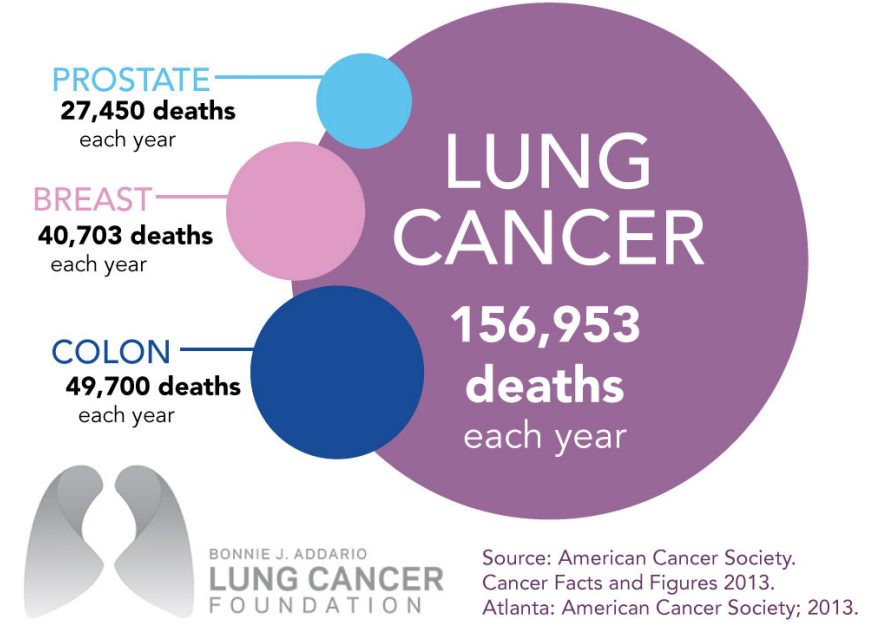November 30, 2016
And they mean, “anyone.” Even if you’ve never smoked.
Most of November has been filled with thoughts of “thanks” and upcoming holiday celebrations, but with the efforts of so many organizations supporting health and wellness, like the Lung Cancer Foundation and American Cancer Society, you are very likely to have heard that it’s also National Lung Cancer Awareness Month.
One of the goals of this national recognition is to “spread the message that regardless of gender, age, race, environmental exposures, smoking or family history, ANYONE can get Lung Cancer!”
Anyone Can Get Lung Cancer from LungCancerFoundation.Org on Vimeo.
And they mean, “anyone.” Even you: even if you’ve never smoked.
More than 228,000 Americans are diagnosed with lung cancer every year, and nearly 160,000 die every year from this disease. In 2016, it is projected that 158,080 will perish: 433 every day 1 every 33 minutes. Of those diagnosed, 17.9% have never even smoked.
The relative risk from smoking has increased over time, despite a decrease in smoking prevalence and the average number of cigarettes consumed per smoker. It has increased by close to tenfold for women, compared to more than doubling for men, meaning women and men are now equally likely to die from a smoking-related disease.
Stats on Survival
Lung cancer has the lowest 5-year survival rate of the other most common cancers: only 18% (compared to Prostate at 99%, Breast at 90%, and Colorectal 65%). Over the last 39 years, the rate of new lung cancer cases has fallen 32% among men while increasing 94% among women. Since the peak rate for men in 1984, the rate of new cases for men has dropped 41%. Since the peak rate of new cases for women in 1998, the rate of new cases for women has fallen 10%.
Lung cancer diagnosed and treated at an early stage has a much higher survival rate, but most cases are not diagnosed until later stages. Early detection, by low-dose CT screening, can decrease lung cancer mortality by 14%-20% among high-risk populations. If lung cancer is caught before it spreads, the likelihood of surviving 5 years or more improves to 55%.
Resources in our Community

In IC, cancer treatment is denied to the uninsured. Cancer treatment is cost-prohibitive to the under-insured. CRCD mitigates insurance barriers to cancer treatment by providing timely conversion of the uninsured to Insured status (MediCal, cancer-specific MediCal programs, and the Pre-existing Condition Insurance Program), and Under-insured to Adequate insurance. Through its Patient Navigation Program (PNP) CRCD responds to specific needs and cultural barriers to cancer care with an emphasis on financial/insurance navigation.
Impact Starts With Information
So many of us have the ability to share information like this with a larger number of people. Please share this post, and others like it, within your organization and with those you serve in your community to help bring attention to the disease and to build awareness around the resources to help.
Related News

Sep 11, 2025
2025 Community Impact Report
Everyone Deserves a Chance to Be Well AHF Releases its [...]

Jul 16, 2025
Resident Leader Spotlights
Celebrating Our Resident Leaders’ Accomplishments We want to take a [...]

Jul 2, 2025
i2 Finalists Announced
Alliance Healthcare Foundation Selects 5 Finalists to Advance to Phase [...]

